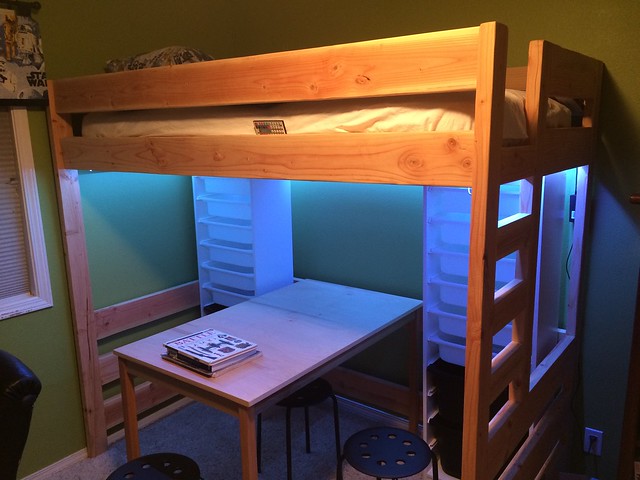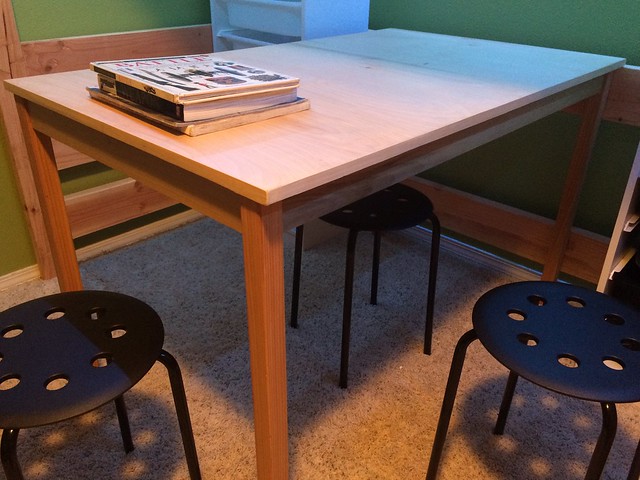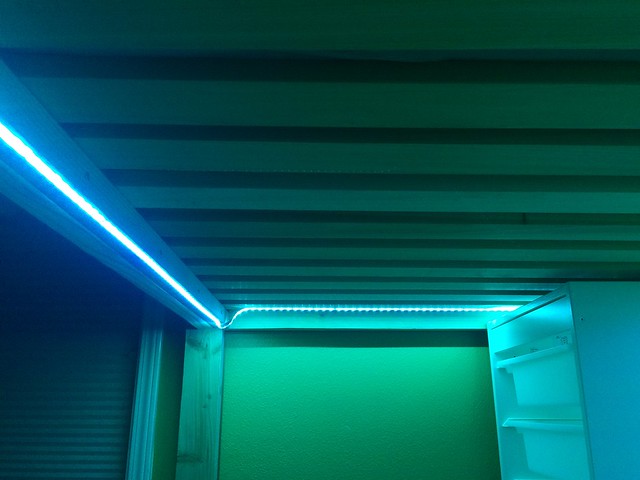- Stop Googling. Let’s Talk. – The New York Times
Quote: "Studies of conversation both in the laboratory and in natural settings show that when two people are talking, the mere presence of a phone on a table between them or in the periphery of their vision changes both what they talk about and the degree of connection they feel. People keep the conversation on topics where they won’t mind being interrupted. They don’t feel as invested in each other. Even a silent phone disconnects us."
(categories: culture iphone life technology )
Monthly Archives: September 2015
Links: 9-25-2015
- How to Write a Product Thesis to Communicate Customer Needs to Design and Engineering Teams « Building Customer Driven SaaS Products | Jason Evanish
Alternative to a PRD or product spec.
(categories: productmanagement product-product-product communication management ) - The Missing Habit Separating Good and Great Product Managers « Building Customer Driven SaaS Products | Jason Evanish
On who to chat with.
(categories: product-product-product productmanagement people communication )
Links: 9-24-2015
- How (and Why) SpaceX Will Colonize Mars – Wait But Why
Have only read the first page so far (while in the midst of reading "A Man On The Moon") but if you’re even a little bit interested in what’s happening in space, you have to read this, awesome stuff.
(categories: mars space exploration adventure ) - The Fermi Paradox – Wait But Why
Mind blown.
(categories: life science space ) - Give it five minutes – Signal v. Noise
Quote: "His response changed my life. It was a simple thing. He said “Man, give it five minutes.” I asked him what he meant by that? He said, it’s fine to disagree, it’s fine to push back, it’s great to have strong opinions and beliefs, but give my ideas some time to set in before you’re sure you want to argue against them. “Five minutes” represented “think”, not react. He was totally right. I came into the discussion looking to prove something, not learn something." via @cdixon
(categories: ideas patience listening thinking psychology ) - The Procrastination Matrix – Wait But Why
Quote: "And the thing the monkey really likes about Q4 isn’t anything about Q4 in particular—it’s that Quadrant 4 isn’t Quadrant 1 or 2. The monkey, whose core drive is to do whatever’s easiest, can’t stand the “important” quadrants, because the important quadrants are where the pressure’s on—it’s where there’s something to prove, where your actions have consequences, where the stakes are high, and where you’re shooting for the stars, which means you might fail to reach them. No fucking thanks, says the monkey. Writing 300 blog posts while I was supposed to be dreaming up brilliant business growth strategies wasn’t “easy” in the sense that I didn’t have to work hard to write them—it was easy in that there was nothing at stake. Stakes are really what’s hard for a human."
(categories: priorities goals urgent important eisenhower-matrix productivity ) - Moom · Many Tricks
May need to try this out instead of Stay.
(categories: mac osx tools ) - How to Master The Discipline of Product Management (Not the job of Product Manager) — Evergreen Business Fortnightly — Medium
Epic list of links / resources for product managers, signed up for their newsletter too, which feels similar to Farnam Street (signed up a couple weeks ago and have thoroughly enjoyed) and The Sunday Long Read.
(categories: product-product-product productmanagement priorities decision-making ) - Clay Christensen’s Milkshake Marketing – HBS Working Knowledge – Harvard Business School
I first read about this in his book "How Will You Measure Your Life?". Quote: "… the jobs-to-be-done point of view causes you to crawl into the skin of your customer and go with her as she goes about her day, always asking the question as she does something: Why did she do it that way?" Funny thing is that I don’t see a note saying that thinking about milkshakes this way actually increased sales, but the "what job are you using this for?" way of thinking is helpful.
(categories: business product-design productmanagement ) - $heriff – Detecting Price Discrimination
I use Amazon Prime *a bunch*, probably need to use something like this once in awhile to make sure I’m not getting price jacked because I spend so much money with them.
(categories: amazon pricing browser business ) - Good Product Manager/Bad Product Manager
Short of list "do / don’t", couple be a good conversation topic.
(categories: product productmanagement management ) - Rarely say yes to feature requests – Inside Intercom
Great list of questions for product managers to ask about proposed / suggested features for a product. Reproduced here for the time in 5 years when the blog permalink changes: 1) Does it fit your vision? 2) Will it still matter in 5 years? 3) Will everyone benefit from it? 4) Will it improve, complement or innovate on the existing workflow? 5) Does it grow the business? 6) Will it generate new meaningful engagement? 7) If it succeeds, can we support and afford it? 8) Can we design it so that reward is greater than effort? 9) Can we do it well? 10) can we scope it well?
(categories: product-product-product productmanagement )
Links: 9-22-2015
- The Radical Calm of Alex Honnold – Men’s Journal Magazine
Quote: "What’s the secret behind his ability to look into the abyss and not flinch? "Just not giving a fuck."… "then, yeah, it occurred to me that every time he left the house it might be the last time I’d ever see him. And if someday, next year, this year, he does come home in a box, he will have lived 50 lifetimes compared to lots of us."
(categories: life calm culture motivation fear )
Links: 9-21-2015
- 18 Truths: The Long Fail of Complexity
Not sure how I ended up on this tab (have been getting the Farnam Street newsletter every week though, highly recommended) but this is a great read on failure, complexity, root cause assessment, safety and large systems.
(categories: failure rca complexity systems safety engineering )
Built: loft bed with a desk and some cool lighting
I had a couple months off this summer and after doing some camping with the family, I got bored sitting around with nothing to do and figured that it was time to graduate the 10 year old from the Ikea Kura (that we got for him probably 7 years ago) to something that would give him an area to work on homework, hang out with friends a little bit and generally last until he’s 15(?) or whatever age boys demand a regular bed. Actually, now that I remember it, my wife figured it was time for him to get a new bed and wanted to buy this loft bed on Ikea:
http://www.ikea.com/us/en/catalog/products/10247987/
which is relatively cheap ($149 plus $99 for the desk top) and would probably work but then, again, I was bored. I did a couple of Google searches for “diy loft bed” and came across this one:
http://thatsmyletter.blogspot.com/2015/03/l-is-for-loft-bed-with-lego-storage.html
which looked easy, really sturdy, had storage for Legos (if you buy the Ikea stuff) and didn’t look very complicated to build. I got clearance from the CEO and started getting ready a week or so ago.
The plans (PDF) are really well done (includes a materials list and a cut list) and since I had the time, I figured I’d traipse on over to this wood store in Portland (which I had discovered via a friend) to buy the wood for the bed. I arrived there thinking (naively) that it would be like Home Depot, where you buy 2x4x8’s and you’re on your merry way. Turns out there’s this whole world of stuff I still have to learn (nominal wood measurements vs. actual right?) and that the plans I had in hand (along with 3 kids) would not quickly convert to the correct cut list so I had to abandon the plan of getting the wood from there, although wow, cool store. Some day I hope to be doing fine wood working with beautiful wood and have a workshop like this but for now… it’s wood from Home Depot. A couple hours later (after naps and stuff), I ended up at Home Depot and purchased the following list of goods (including the price here because it’s interesting to see how it all adds up compared to what you’d get from Ikea):
- 7 2x6x10 doug fir: $36.26
- 1 2x6x8 doug fir: $4.14
- 5 2x4x8 doug fir: $13.70
- 1 2x2x10 cedar: $6.77
- 2 2x2x8 cedar: $11.94
- 8 1x3x10 poplar board: $114.08
- 3/4″ 4×8 birch plywood: $49.98
- 3 Kreg 2.5′ coarse screws – 50ct: $14.91
- 2′ wood screws – 1lb: $5.98
- Kreg 1.25′ fine screws – 100pk: $3.97
- Clear Finishing Gel: $9.99
- Birch Edge Banding: $13.99
- Norton 220′ grit sandpaper: $4.99
- 120 grit disc sandpaper – 15ct: $9.97
so all in, about $300 and it’ll easily handle all three boys as they grow up. Weirdly, and I’m sure this is something I should have thought differently about, the two most expensive pieces / purchases were the poplar boards which ultimately are the mattress slats and probably didn’t need to be poplar and the plywood for the desktop, which I had to buy an entire piece of when I only need 1/3 of the board. I kept the entire board though because I figured I could make a couple more tables in a year or so when the younger dudes need tables / desks in their room. Not sure if there’s something cheaper than poplar for the mattress slats, but those turned out to be about 30% of the total cost, which seems absurd.
Worth noting: I had never done pocket holes, so I also needed to buy a Kreg Jig R3 Pocket Hole System, which added $39.97 to the total cost but wasn’t necessarily “materials” so I won’t count it here.
Anyway, everything went together relatively quickly and then there was the lull of needing to stain / seal the bed, which naturally gives you a couple days to wait around but I got it done Sunday afternoon with Grandpa (who came over to help assemble the pieces up in my son’s room) and it’s worked out really really nicely. A couple of the comments I read on the blog post above said that the bed was wobbly but for whatever reason, the bed as I put it together is unbelievably solid, I can climb up it (185 pounds) and it barely wiggles. Pocket holes make for some really tight joints.
The desk was also relatively simple to put together, I did make it a bit smaller than was spec’ed in the plans so that there’d be more room to maneuver around and after doing a little bit of reading on finishing plywood tables, I visited the Rockler Woodworking store here in Beaverton and bought some birch edge banding, which I think ironed and sanded on and that gave the desk a really nice finish (and I learned something in the process). We’ll see how long the banding lasts but it was amazing to see how the iron + a bit of sanding makes it look like a finished piece and not just a piece of plywood.
I ended up buying an RGB LED Strip Light Kit on Amazon to put some fun light underneath the bed so that my son could do homework and do Lego stuff on the desk, which is both practical (it’s relatively well lit now) and fun (he could have a disco party in his room now). Pictures of the bed:

and the desk:

and the lights:

Last, I bought a mattress on Amazon after remembering and re-reading Jason Kottke’s post on mattresses and how they’re a ripoff and ended up buying this one on Amazon, which has worked out well for the couple days that we’ve had it and feels much nicer than anything we’ve purchased previously at Ikea (and we slept on Ikea mattresses while we lived in England last year so I have experience). Also, $99, can’t beat that for a kids mattress.
Other stuff:
- Stools are from Ikea, $5 each
- We ended up getting 4 large storage boxes ($4 each) and 12 small storage boxes ($3 each) to fit into the 2 storage frames ($39.99 each).
Links: 9-14-2015
- Getting My Ass Handed to Me by the World’s Largest Hedge Fund — Medium
Quote: "I now run through a mental check list as a first step in reasoning. It is scenario specific but usually starts with some take on the following 5 questions and expands from there: What am I trying to achieve here or what is my goal? What information/evidence do I have and what information/evidence do I still need? What are the potential second order (and higher) impacts of this scenario (both upside and downside)? What has to happen for “X” scenario to be true? What are the risks and rewards of this scenario and how likely are they to transpire?
(categories: why thinking reasoning system-1 first-principle ) - 7 Pro Tips For Avoiding Blisters | The Big Outside
My summit of Middle Sister got cut short because of blisters on both heels. Hopefully correctable, but have since purchased new socks and some HikerGoo.
(categories: outdoors hiking health )
Links: 9-11-2015
- Leading cross-functional teams – by Ken Norton
The "How to get respect from…" sections are worth reading.
(categories: management product productmanagement priorities goals ) - 12 things product managers should do in their first 30 days at a new company | Google Ventures
Jumping off a cliff is not listed (see teaser image).
(categories: productmanagement business product work priorities )